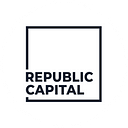DeFi-ning the Future of Finance with Acala
Acala is a decentralized finance (DeFi) hub and stablecoin platform allowing for cross blockchain liquidity and applications. Built as part of the PolkaDot network, the Acala Network’s native currency, known as the Acala Dollar (aUSD) is a stablecoin, which means that users can always exchange one Acala Dollar for a US Dollar. Eligible users can stake their Acala Dollars and earn rewards.
Acala Co-Founder Ruitao Su has been an engineer and entrepreneur pretty much his whole life, only working one “job.” Before he jumped into the blockchain space he had been an independent app developer, focusing on creating mobile applications, almost all of which were featured in the Apple app store. “I like to create stuff,” Su put it simply, and being an engineer meant he knew how to “create stuff” pretty well. One of the featured apps included Powderly, an app for tracking skiing and snowboarding, which Su created out of his love for snowboarding.
Su fully committed to the crypto space about 6 years ago, but he knew about Bitcoin when it was less than $100. He had discovered the whitepaper (initial technical description) on Reddit, read it, and decided it wasn’t going anywhere. He was glad however, to have been proven wrong, and doesn’t feel too beat up about not joining the Bitcoin train back then. “Even if I had participated back then, I would have probably mined Bitcoin, sold it, and regret bitterly now.”
Su mentioned that it is commonly said that “for Bitcoin to go from $0 to $100 was considered impossible, but for it to go from $100 to $1,000,000 is inevitable.” He is fully convinced that if the “impossible” has already happened, that things are looking good for the future.
Su got involved once people started to get excited about the applications of blockchain in tech, specifically creating products useful in the finance world. By then, he was fully convinced that blockchain would disrupt the world of finance. “The revolution was coming and I wanted to be part of it.”
He met his Acala co-founders in New Zealand and China. They aligned on their mission, setting out to create something useful that can also add value to its token holders or anyone. “Blockchain is a solid technology but there’s so much speculation,” and Su emphasized they wanted to have a solid product, not just contribute to the ICO craze that was happening a few years back, when everyone and their uncle was selling a token all of sudden.
When setting out to create, they had one rule: create something finance related with a real use case. They explored a variety of potential infrastructures — Ethereum 2, Cosmos and Substrate among them — and compared their features and communities. Taking an educated guess on how the blockchain developer will evolve, and thinking that Substrate was “super cool and promising,” they decided to build on top of the Polkadot network. Polkadot is a newer decentralized platform, focused on security, scalability and innovation.
Now, Acala is almost ready to launch.
As Polkadot has been gaining popularity recently, I was curious to dig into more detail on the decision behind becoming part of the network. Su said for them it was less of a technical question, moreso based on how they see blockchain technology evolving.
“We believe the future is going to be focused on multi-blockchain, interconnected networks and interconnected money levels. Ultimately, the blockchain network is going to turn to specialization; more and more networks will be fine-tuned for one particular purpose or domain, and not handle everything, just it’s own domain super well.”
The team felt that Ethereum 2 was more of a general computational layer, and wanted to see a network more fine-tuned for a particular usage; in the case of Acala, the usage is finance. After looking at some options, they decided Substrate was the best choice for what they wanted. Su explained that Substrate is the first purpose built framework, comparing it to a React or Node.js (JavaScript) on blockchain where you can pick and choose what module you want. Examples include a staking module, currency module and a smart contract module.
The team is excited to be part of the Polkadot network as they strongly believe in the framework behind it, and according to Su, “framework always drives the ecosystem.” Polkadot allows the applications built on it to utilize its strong security layer, is truly decentralized and also allows for interoperability for the different applications on the network. The applications are no longer constrained to themselves or siloed: they are part of a larger network where they can “communicate” and work together.
As we get more involved in the cryptocurrency and blockchain space, Republic Labs is excited to see how the industry is evolving. With more efficient, interconnected and user-friendly use cases, it’s awesome to see the decentralized space becoming more and more mainstream.
Republic Labs is the advisor to clients which have invested in Acala, nothing herein should be construed as investment advice.
By Elizabeth Olshanetsky (elizabeth@republiclabs.co) for Republic Labs.
